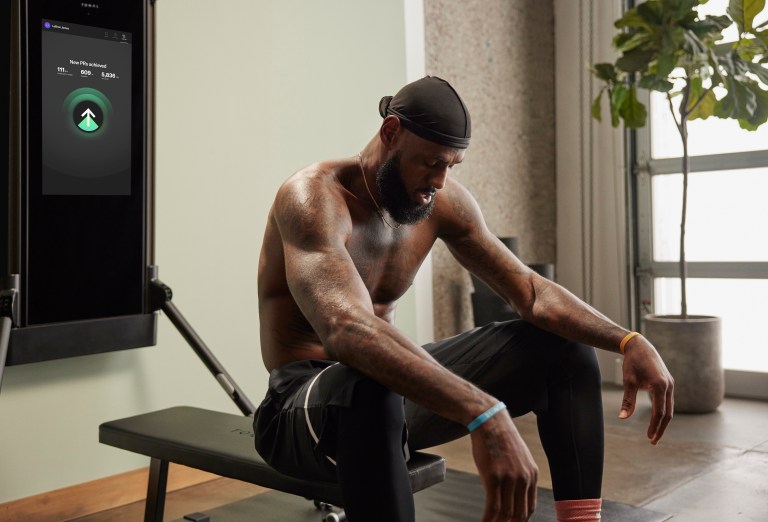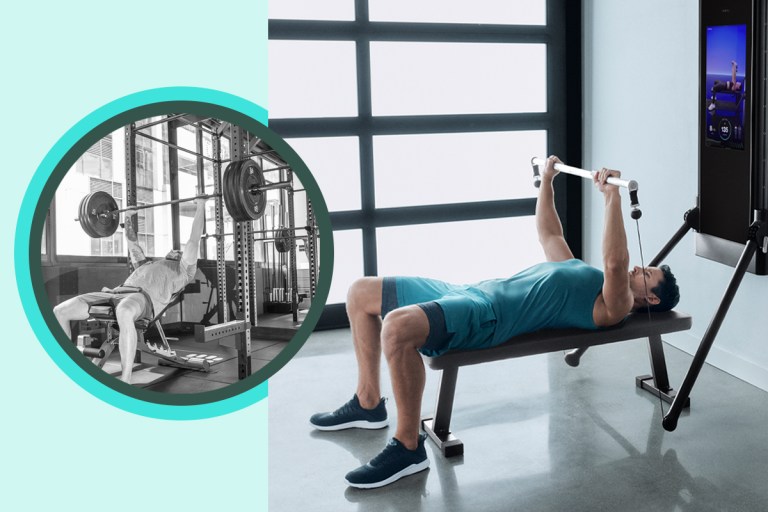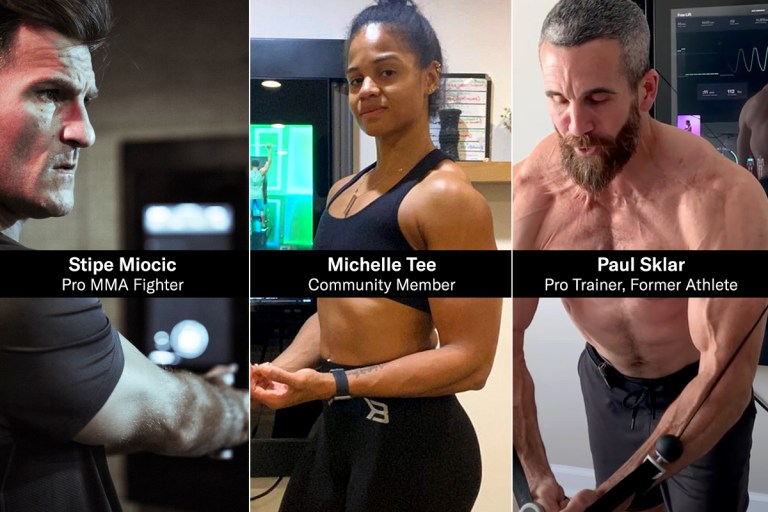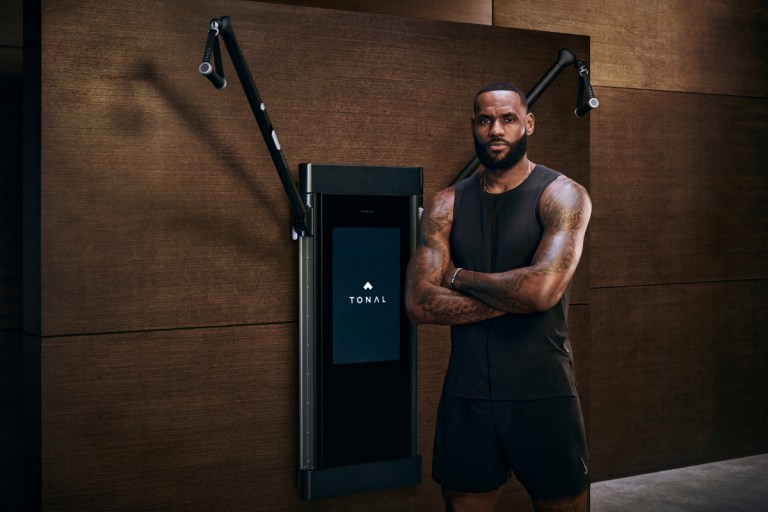LeBron James’ Trainer Mike Mancias Shares 6 Tips You Can Apply to Your Own Routine
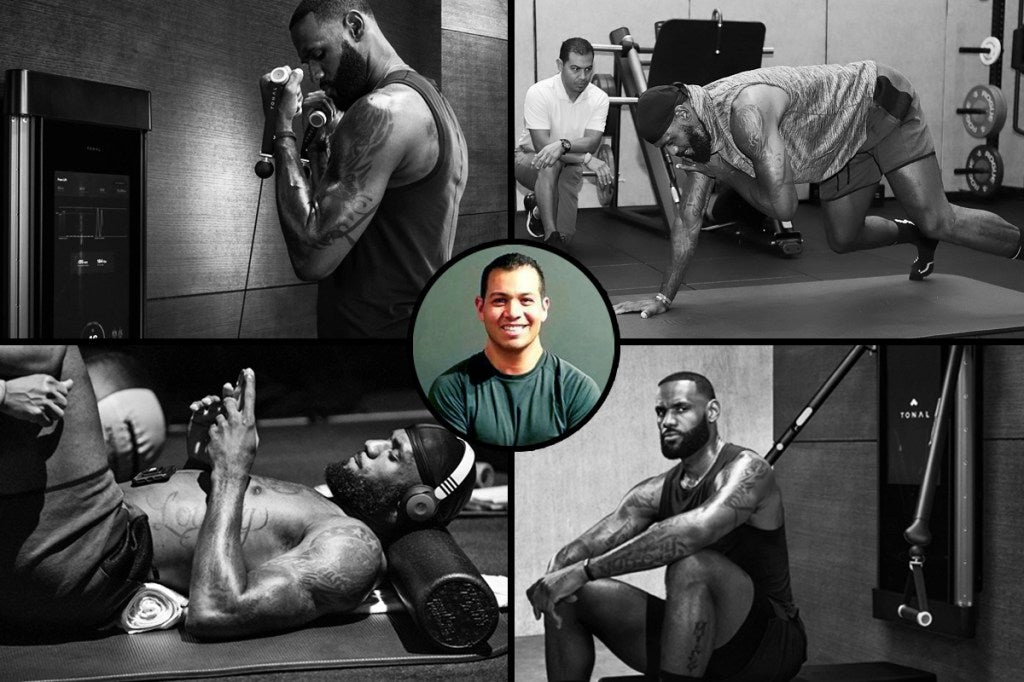
These deceptively simple principles have helped James remain at the top of his game for more than two decades.
For LeBron James, working out is more than his profession—it’s his way of life. “Strength training is such an important part of my routine,” the four-time champion and four-time league MVP says. “It’s my lifestyle. It’s who I am.”
This all-in approach requires a relentless pursuit of improvement. “Training as a lifestyle means committing to getting better at everything every day,” says James’ longtime athletic trainer Mike Mancias. “Holistically, it’s strength, conditioning, nutrition, sleep, range of motion, and mindfulness.”
Mancias believes these techniques have kept James at the top of his game for nearly two decades. By continually working on his body and evolving his regimen, James has achieved longevity while also remaining mostly free from major injuries. But as the demands on his body have increased, so have the demands on his time.
Now in his 19th season, James works to balance family, building up his community, entrepreneurial ventures, and a rigorous 82-game schedule, so efficiency is key. The next evolution of his training includes partnering with Tonal. By adding the smart gym to his arsenal, he’s become more productive with his workouts in less time.
Here, Mancias and James share their holistic training tips that any athlete, from elite to weekend warrior, can apply to his or her lifestyle.
1. Start at the Top
Before working on the body, you have to train the mind. Not only does James work mindfulness techniques into his personal workouts, but he also meditates in the morning, before practice, after practice, pre-game, and post-game.
“Part of longevity is making sure your mind is right. It needs to be in a good space,” Mancias says. “LeBron’s motor is always on. It’s always revving. It’s always going, so one way he keeps sanity is through these mindfulness techniques. Meditation is huge.”
For James, it’s also about preparing his mind to overcome small obstacles and challenges in his training, which will, in turn, prepare him for bigger ones that he’ll face in life. That’s when he feels his strongest.
“Sometimes your mind and your body are telling you that you can’t give more,” James says. “That’s when you tap into another place and push into adversity, push into the last set, push into the last minute of a workout, push through the last seconds and just see ways you can be comfortable with being uncomfortable.”
Your Turn: Mancias suggests finding the right time of day to spend 10 to 15 minutes with yourself. For some, that could mean using a guided meditation like the sessions offered on Tonal. For others, it could be visualization or connecting to your breath. The key is to put the phone or screen away, forget about productivity goals, and center yourself.
2. Less Is More
There’s a misconception that an athlete like James spends hours at a time at the gym working out. In reality, it’s actually difficult for James to put on more muscle at this stage in his career, and he’s more focused on leaning down and sharpening key muscle groups.
“It’s primarily all about getting LeBron’s core right. That’s been the number one thing for years,” Mancias says. “Early on, it was a lot about building strength and proprioception, now it’s all movement-based. All of our movements are focused on core stability.”
Having a Tonal installed at James’ home gym as well as his team’s practice facility has also helped the player streamline his sessions. “It’s easier in a sense that everything is right there in front of you,” James says. “You don’t have to move across the room to use different machines or rack weights because everything is at arm’s length.”
Your Turn: Your core includes all the muscles that support your spine—everything from the chest down to the groin including your back. Mancias says you don’t need to do a ton of sit-ups, but rather, he suggests focusing on unique core exercises on Tonal like straight arm pull-downs or transverse cross-rotational movements like Pallof press with varying resistance. Plank variations, squats, or leg marches are other ways to switch it up and build a solid core.
3. Plan Ahead
There aren’t a lot of people with busier schedules than LeBron James. He and Mancias don’t just plot out their training days in advance, but weeks and months ahead, as soon as the season schedule comes out. While the calendar of a normal person may not be as full as a pro athlete’s, it’s still important to make time for personal health and wellness.
“I have two young kids at home, and [LeBron and I] make it a priority no matter what,” Mancias says. “We find 25 to 35 minutes a day to make it work. We owe it to ourselves, our families, and our kids to be healthier. Definitely just find time to prioritize yourself.” A session may last less than an hour, but the philosophy of moving with intensity helps both James and Mancias get the most out of a short period of time.
Your Turn: Mancias knows it takes a while for something to be a habit, so he recommends planning your workouts in advance and actually adding them to your calendar. You can also set yourself up for success by having your workout clothes already laid out so they stare you in the face instead of having to hunt for them in the morning.
4. Mix It Up
Variety is the spice of life and the ticket to training success. “You don’t want the same reps. You don’t want the same exercises. You don’t want the same cadence every single time,” Mancias says of how they keep James’ workouts from becoming monotonous.
“LeBron is definitely not cookie-cutter,” he adds. When they’re not together, James can rely on Tonal to add some variety to his routine.
“The technology is incredible because you’re able to do a workout by yourself or be in a class,” James says. “I love the efficiency, being able to just get my work done, and get it done the right way.”
Another way the trainer keeps things fresh is by setting the tone with music, which James uses to get in the zone before a workout, practice, or game. While the drums and bass of hip-hop are usually James’ go-to when he works out, Mancias will sometimes change the atmosphere with something lighter like Frank Sinatra.
Your Turn: “Our lives are mostly spent indoors,” Mancias says. “Switch it up by adding an outdoor activity for a different stimulus.” Don’t be afraid to be creative by implementing a short run outside and coming back to do a short circuit workout on Tonal, for example.
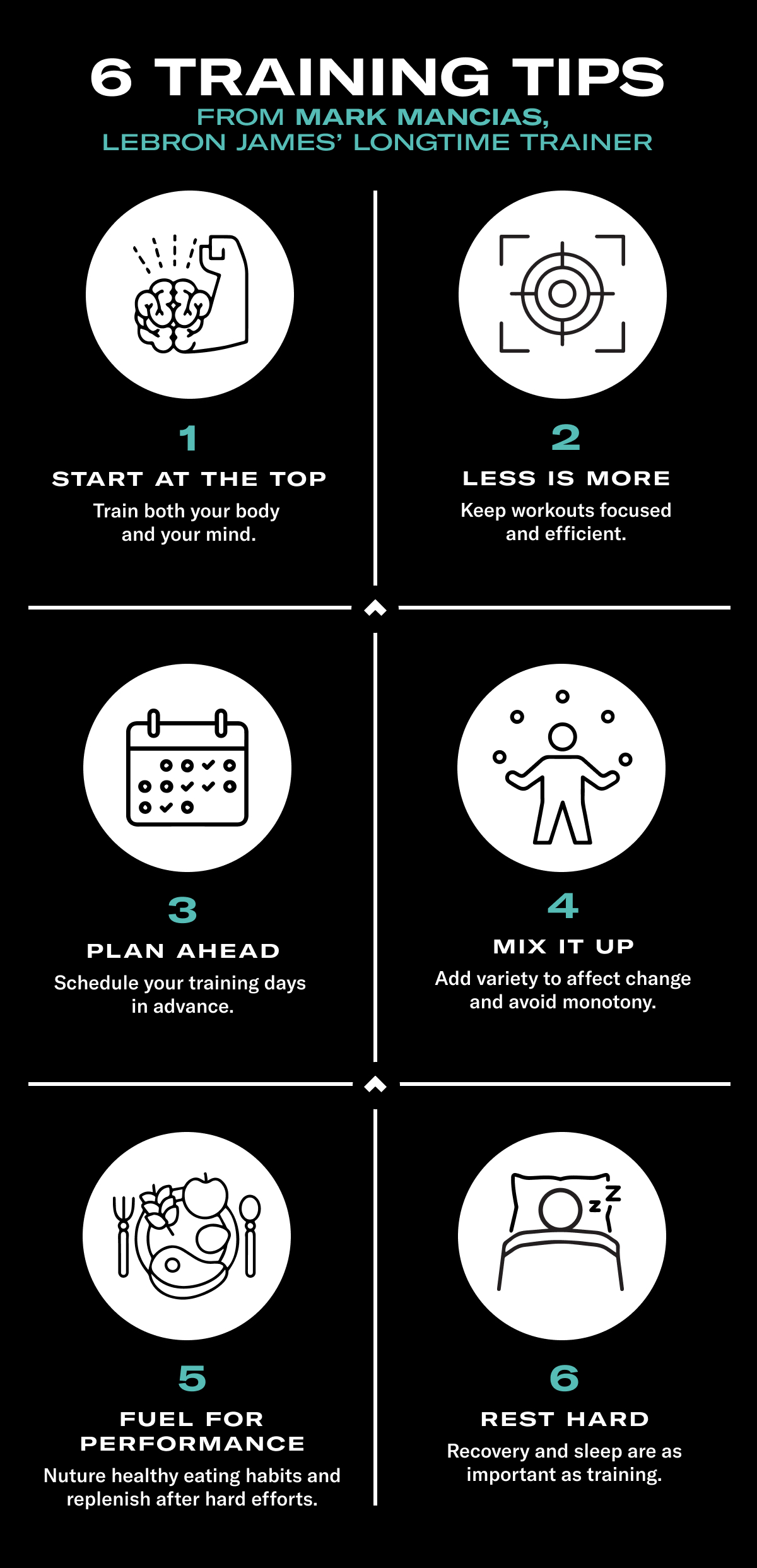
5. Fuel for Performance
When you work with a Formula One race car like LeBron James, you can’t put any type of gas into it. “Working out is one thing, but there’s an old cliché: abs are built in the kitchen,” Mancias says. “The correct eating habits should include finding the right balance of calories in versus calories out and making sure the scale is always heavier on the calories out.”
James’ pre-game meal usually consists of clean carbohydrates and a lean source of protein like fish or turkey. His post-workout or post-game fuel is usually a plant-based shake. “After every activity that’s a hard workout, you’ve got to replenish,” Mancias adds.
Your Turn: Hydration isn’t only key to helping prevent muscle cramps, but it’s also crucial to muscle health, connective tissue, and even cognitive thinking. A rule of thumb is to consume half your body weight in fluid ounces every day, Mancias says. He adds that if you’re really active, try adding electrolyte supplements or sports drinks with carbohydrates in addition to water.
6. Rest Hard
For James, his recovery is just as important as his training. Even though he’s tried different kinds of recovery tools over the years, there is still nothing like a good eight hours of sleep and watching something other than basketball. “I truly hope a well-earned rest day falls on a Sunday during the NFL season when I can do absolutely nothing but watch football all day and all night,” James says.
Find something that gives you a physical and mental break, which will, in turn, help the body recover even better, Mancias adds: “You get the mind to rest a little and the body will follow,” he says. “Put LeBron in a good space mentally, then you have an optimal environment for healing and recovery.”
Your Turn: Mancias says recovery is all-encompassing. “It’s everything you do the minute you step off the field, court, or outside the gym.” Nutrition, sleep, and range of motion are all part of recovery. One simple tactic to implement after a hard workout: go for a short walk and slowly bring your heart rate down. This will help your body transition to the non-workout parts of your day.
- FITNESS
